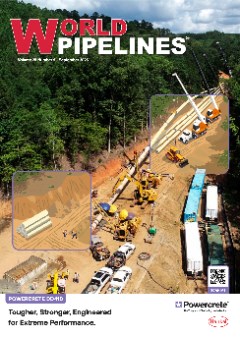Editorial comment
As the end of summer approaches in the Western Hemisphere, attention inevitably turns to the preparedness of energy systems for the colder months ahead. Gas storage levels become a focal point, as they hold the key to ensuring a stable supply throughout the winter. This time of year serves as a reminder for energy stakeholders to assess the resilience of their infrastructure, and strategies, for meeting winter energy needs. The ability to maintain strong gas storage levels is crucial for avoiding disruptions and for navigating the kind of geopolitical, weather, and energy consumption factors that can affect each region’s resilience in the winter months.
Register for free »
Get started now for absolutely FREE, no credit card required.
The EIA reported in August that US natural gas storage levels remain above average as the sector moves through injection season. In the latest Short-Term Energy Outlook, the EIA forecasts that US working natural gas inventories will reach 3872 billion ft³ by the end of October, or 2% more than the previous five-year average for that time of year.1 Natural gas inventories grew quickly in late April to early June, with seven consecutive weeks of net injections to inventories exceeding 100 billion ft³ each for the first time since 2014. This gives the US a buffer heading into the winter months. The US relies heavily on natural gas due to its abundant domestic supply, low costs, and extensive infrastructure, ensuring energy security and supporting export potential.
As the US shows resilience in gas production and storage, Europe is navigating a vastly different energy landscape. In September, the global energy community will convene in Europe (in Milan) for Gastech, to discuss the future of natural gas, LNG, alternative fuels, and climate technologies. As Europe strides towards its ambitious 2027 deadline to eliminate reliance on Russian gas, the event will serve as a critical juncture for discussing Europe’s energy resilience and the role of gas in the transition to a low-carbon energy future. The EU’s strategy to phase out Russian energy imports necessitates a robust diversification of supply sources and a re-evaluation of energy infrastructure.
The EU’s ongoing efforts to wean itself off Russian gas are shifting the region’s energy reliance towards diversified LNG sources and renewable options. European gas storage levels are projected to hit 79% by the end of August, providing a solid cushion ahead of the colder months. However, this figure is a full 14% lower than the previous year, underscoring the challenges that remain as European gas imports are increasingly decoupled from Russian pipelines.
The recently-published ICIS Gas and Power Foresight report illustrates a fragile but essential strategy: Europe’s increasing reliance on LNG send-out (up 58% from the previous year) highlights the ongoing diversification of supply.2 But the looming risks of low wind and nuclear outages across the UK and Central Western Europe demonstrate how easily the region could face volatility, especially during harsh winter months.
The potential for global LNG shortages is real, especially as demand from China intensifies, and the high price volatility associated with LNG trading continues to exert pressure on markets. The global market’s tight supply-demand balance reinforces the case for strategic gas storage as an essential element in stabilising prices and guaranteeing security of supply. For Europe, achieving its storage goals is critical to managing the risks that come with LNG reliance.
At Gastech, discussions will focus on emerging technologies like hydrogen and AI, but also on the critical role of gas pipeline infrastructure in Europe’s energy future. The resilience and flexibility of pipeline networks will be key to ensuring energy security and supporting the transition to diverse, low-carbon energy sources.


